Welcome to a very eggy week on Science Sparks! Shrinking eggs is the first of 3 egg based experiments, so if you like this one, pop back later in the week to see what else we have been up to! This experiment looks at osmosis.
Osmosis is the net movement of water molecules across a partially permeable membrane from a region of higher water concentration to a region of lower water concentration.
Water molecules flow from one side of a membrane to the other until the concentration of water molecules on both sides is equal.
What you need:
- Two eggs
- Water
- Two glasses
- Vinegar
- Sugar
- A pin
This experiment has 3 stages:
Remove the shell from the egg with vinegar
Shrink the egg by placing it into a concentrated sugar solution
Grow the egg by placing it in water.
Remove the shell from an egg
We need to remove the shell to expose the semi-permeable membrane of the egg. This can be done by placing the eggs in a cup of vinegar, so they are totally covered for about 24 hours. After this time wash the egg rubbing away the remaining bits of the shell.
Shrink and grow the egg
Make up a concentrated sugar solution by dissolving sugar in water. Place one egg in a glass of water, and the other in the sugar solution. Our sugar solution looks quite dark as I used brown sugar. Note how the egg in the water sinks to the bottom of the glass while the one in the sugar solution floats. This is because the sugar solution is denser than the water.
- Leave for another 24 hours. You can see the egg in the sugar solution looks much smaller than the one in the water.
Prick the egg from the water with a fine needle and watch a jet of water shoot out!
- Put the shrunken egg in water and watch it grow as it reabsorbs the water, this might take a few hours.
Why does the egg shrink and grow?
The sugar solution is much more concentrated than the water, this is because it contains dissolved molecules of sugar. The dissolved sugar molecules cannot pass through the semi-permeable membrane of the egg, but the small water molecules can. The water moves from the less concentrated egg solution to the more concentrated sugar solution until the concentration of water is the same on both sides. Therefore water moves from the egg to the sugar solution, and the egg shrinks.
When the shrunken egg is placed back in water, the concentration of water inside the egg is lower than the water, so water moves from the water to the egg, making the egg increase in size.
When we pricked the egg that had been in the water, water shot out of the egg. This is because the egg has absorbed water, and so the inside of the egg is under more pressure than usual.
The egg shell dissolves in the vinegar as the acetic acid in the vinegar reacts with the calcium carbonate of the shell. Carbon dioxide is given off during this reaction so you should see bubbles of gas escaping.
Extension Tasks
Weigh the eggs after removing the shell, after they shrink and again after they reabsorb water to see how much water is lost and gained at each stage.
Try adding food colouring to the water and watch as the eggs absorb the coloured water.
Soak a boiled egg in vinegar, this should make the egg so rubbery it will bounce ( from a low height ). You can also bounce a non-boiled egg that has been soaked in vinegar.
Don’t forget to wash your hands after handling raw eggs!
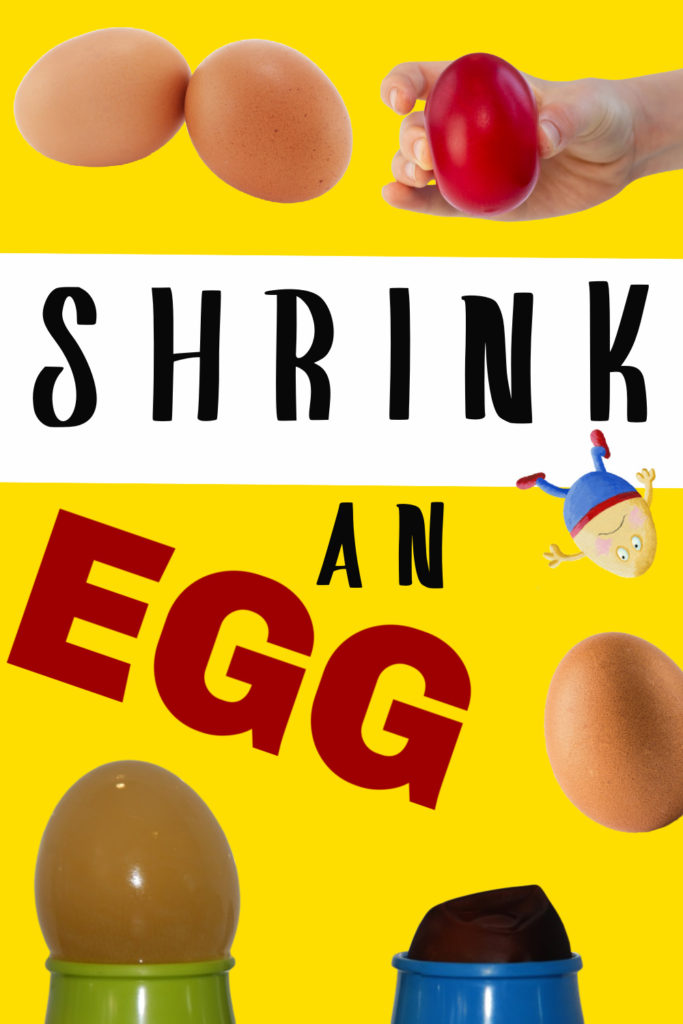
Last Updated on January 18, 2023 by Emma Vanstone

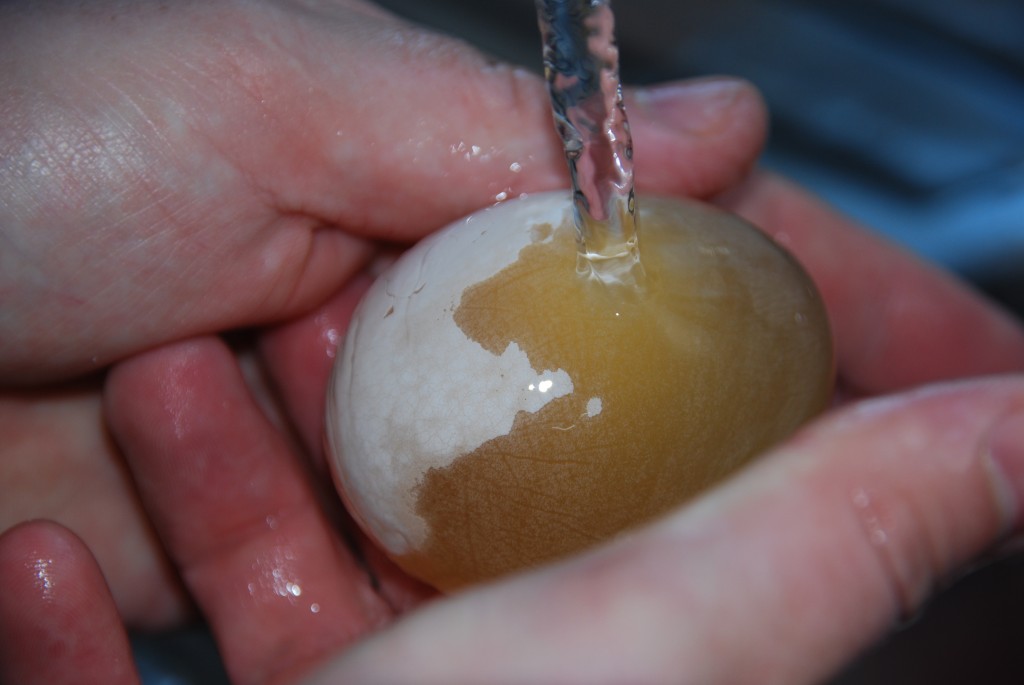
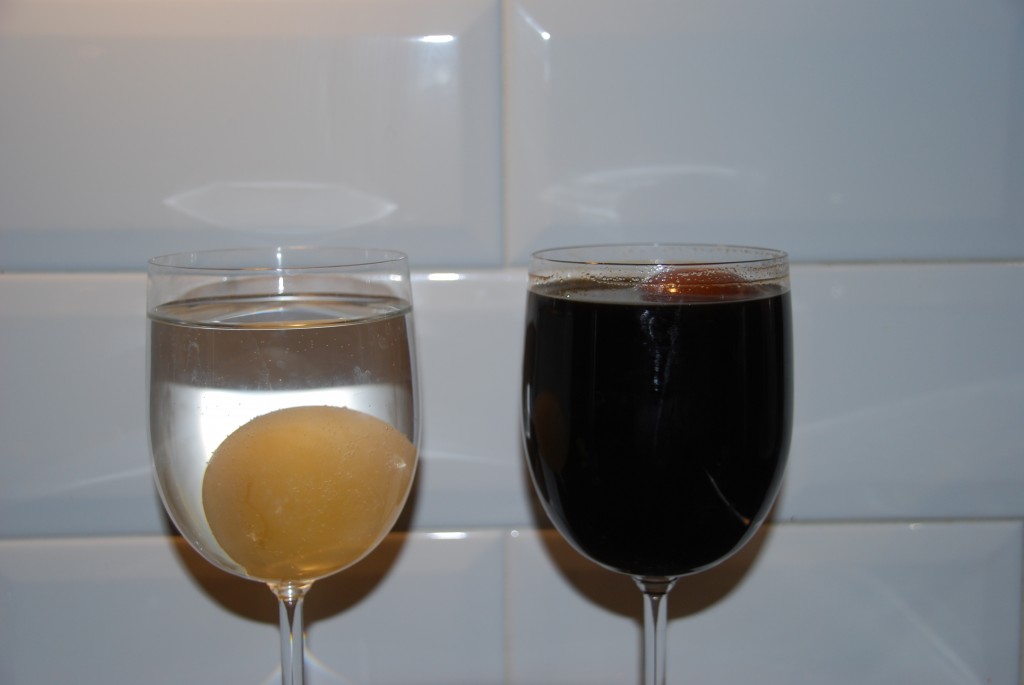
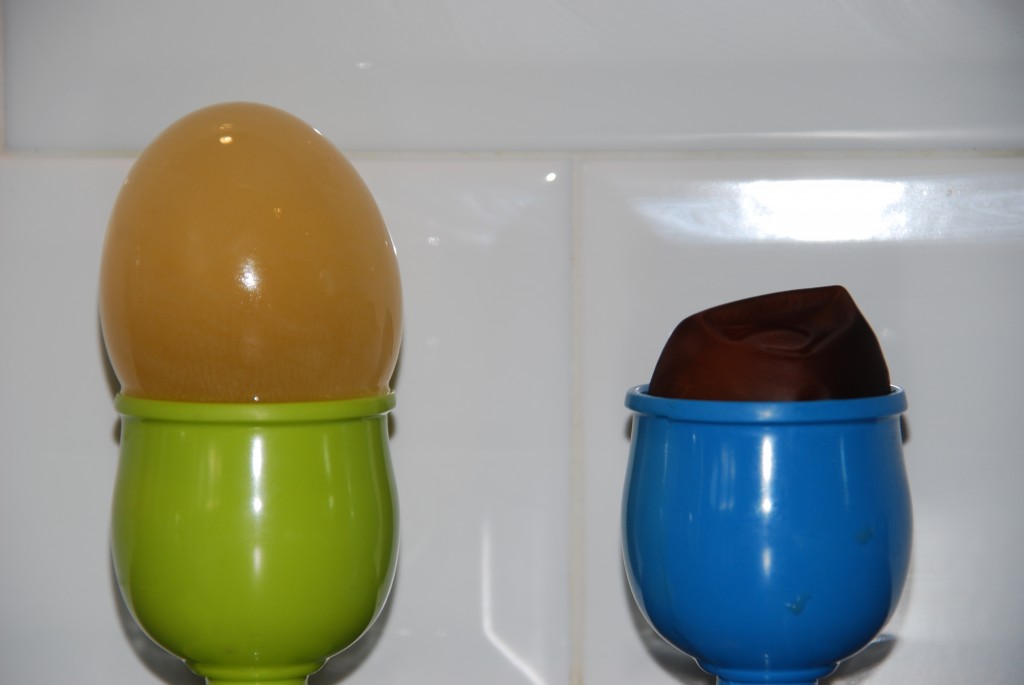
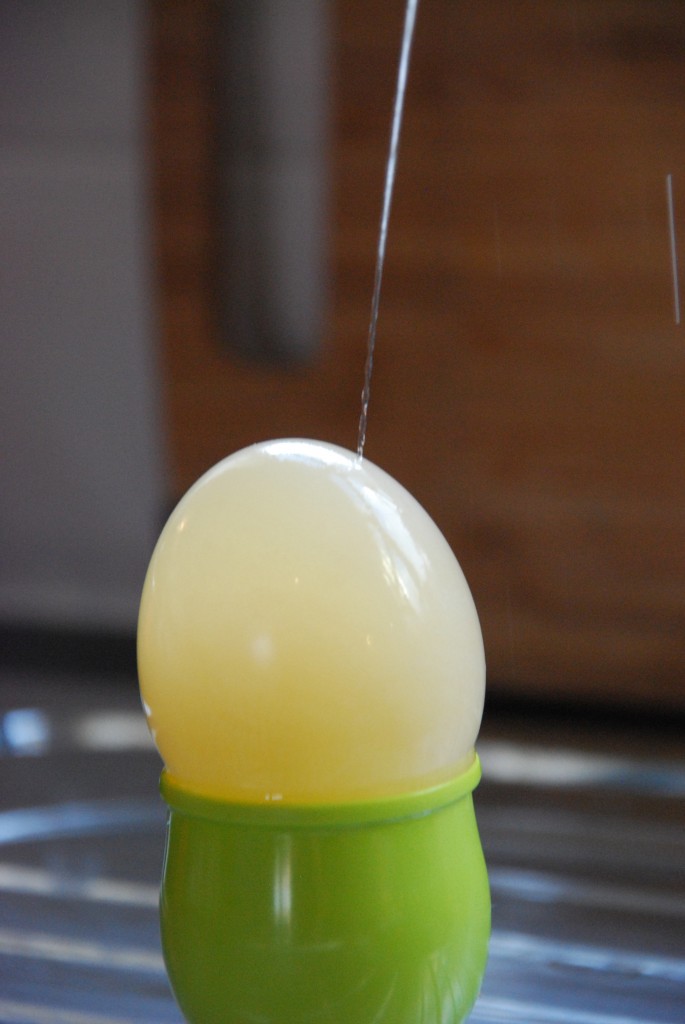
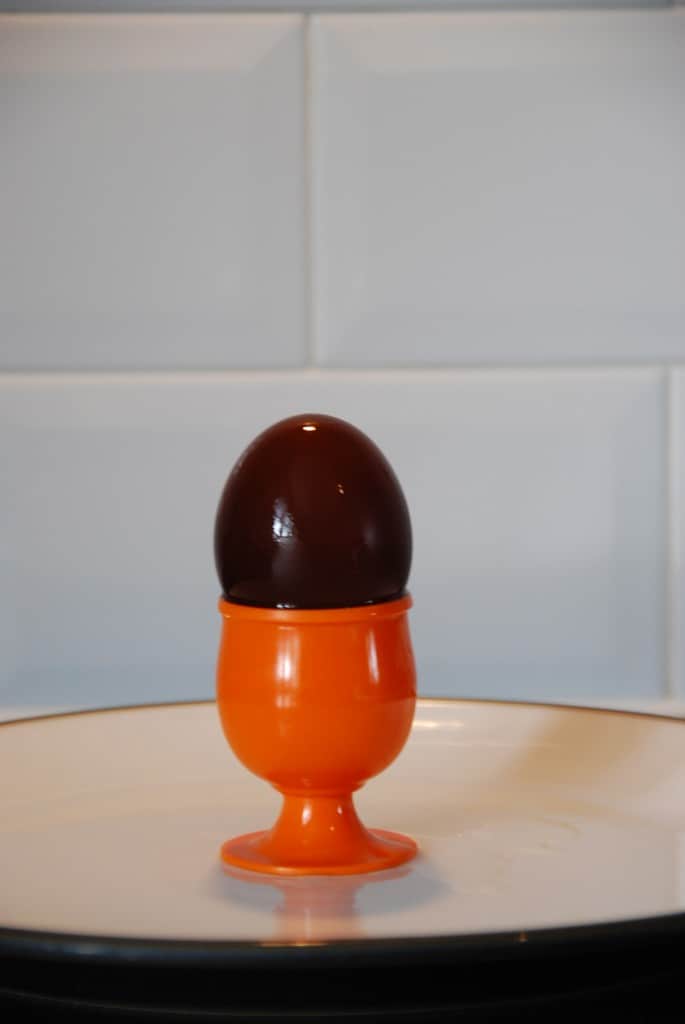
this looks great….I won’t promise to do it as I still have 2 avocado stones on my kitchen table!
Do it!!! xx
How interesting. Thanks for linking up and sharing this idea on my site.
Sharing a link over on Facebook.
Do you use hard boiled eggs? How does the egg not break when removing the shell? Does the vinegar cook it? Thanks
The egg is not cooked inside, it is liquid, the vinegar removes the shell, but leaves the outer membrane which keeps the egg in tact.
What age is this appropriate for?
My children were 3 and 4 at the time, I did everything for them, but they were very interested in it.
Oh wow! What a neat experiment! Thank so much for sharing with Tuesday Tots. Pinned 🙂
This looks really cool!
How much sugar did you use for the solution ?
These all look like fun! My 11 yod and I were just wondering how long do you soak the hardboiled egg in vinegar to be able to make it rubbery and able to bounce?
Thanks!
It usually takes a couple of days and you’ll need to wash away the shell remnants.
Sorry but I’m a biology student yr11, osmosis is actually the diffusion of water from a high concentrated region to a low concentrated region. I’m sure you made a mistake because my textbooks and what I’m being taught all the opposite of what is in your statement. Correct me if im wrong, I did this experiment last week and I’m writing a lab report and needed some more explanation from the internet. Sorry, wouldn’t want other people getting confused.
hi Dear. where in the text did you find the wrong statement opposite to the osmosis law, i.e., water diffusion from high to low concentration?
maybe by the term concentration which was only used for the sugary liquid and it meant -i think- the concentration of big sugar molecules, if it is high then the water is low and if they are low, then the water is high. so you’d actually need to reverse the low/high adjectives to define how much water you have, if you were reading that part about the sugary liquid
So i guess whenever you see the term concentration, just imagine they ar talking about the sugary liquid and not the water (pure water)
hi Dear. where in the text did you find the wrong statement opposite to the osmosis law, i.e., water diffusion from high to low amount? pls notice: amount and not concentration. The term concentration is only used in the sentences regarding the sugary liquid here and not the pure water
maybe by the term concentration which was only used for the sugary liquid and it meant -i think- the concentration of big sugar molecules, if it is high then the water is low and if they are low, then the water is high. so you’d actually need to reverse the low/high adjectives to define how much water you have, if you were reading that part about the sugary liquid
So i guess whenever you see the term concentration, just imagine they ar talking about the sugary liquid and not the water (pure water)
very fun and love you guys